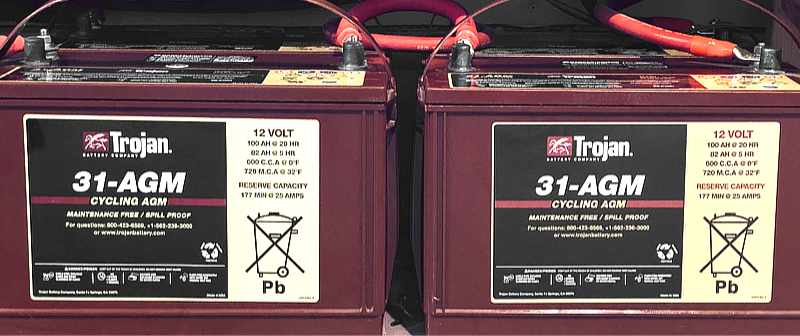EMP Proof Batteries For Off-Grid Battery Bank

Batteries that can survive an EMP. Can a EMP fry or ruin a battery? Certain types, maybe yes. But the most common types of batteries are perfectly safe from the effects of EMP. Yes, EMP proof batteries do exist. Let me explain..
EMP (electro-magnetic-pulse). A burst of electromagnetic energy. What causes it? Well, a number of things could.. One common source is lightning. Lightning produces an EMP within its vicinity which could damage or ‘fry’ electronics. A few years ago, a nearby ‘bolt’ zapped and fried my wifi router simply by being close enough for its EMP field to cause damage. Since then, I’ve protected the router!
In the context of this article however, we’re talking about an EMP source that would be much more devastating. A nuclear EMP weapon. All nuclear weapons produce EMP. However one that is purpose-built-designed and detonated at altitude for maximum effect, has the potential to destroy much of the electronic infrastructure within its reach.
[ Read: Nuclear EMP Components E1, E2, E3, and what they mean… ]
Though seemingly an unlikely occurrence, it is a legitimate concern. There are many aspects of mitigation. However lets address just one question here. EMP effects on batteries..
Which Batteries Are EMP Proof
Good ‘old fashioned’ lead acid batteries (e.g. car batteries). AGM (absorbed glass mat) batteries (I use these for my solar powered battery bank energy storage). Also, consumer type alkaline batteries such as AA, AAA, C, D, 9-volt are EMP proof. NiMH rechargeable batteries too.
EMP proof batteries are any type of battery that do not have electronics within.
Are Lithium-Ion Batteries EMP Proof?
Short answer, no.
One concern is that of the Lithium generation batteries. They are a tremendous source of energy storage. Electric vehicles use them. They’re a common battery for all sorts of power tools and equipment. Laptop and cell phone batteries, and so much more..
They are becoming a common battery type for solar power energy storage (battery bank) due to their energy storage capacity within a smaller lighter weight package. And, you can draw them down to almost ’empty’, unlike lead acid type batteries which would suffer damage under this condition.
Here’s the thing.. A BMS (Battery Management System) is essential in a Lithium-Ion battery system. You might say it’s the battery / battery pack ‘brain’. The battery’s built-in electronics is tasked with monitoring and managing the battery not only for performance, but for safety. Without it, a lithium battery or battery pack could fail in spectacular fashion.. as in catch fire and/or explode. It is absolutely necessary.
The BMS is the weak link when it comes to EMP. Should the BMS fail, well, that battery system is down.
There is some debate regarding the potential extent of damage from a weaponized EMP. And this is valid because there are a number of variables that would contribute to the extent. And this includes that which may or may not affect batteries with BMS. In other words, how bad would the EMP have to be in order to damage the BMS.
Given my interest in the subject (because I have an Off-Grid battery bank which some day may need to be replaced), I contacted a well-known manufacturer of Off-Grid charger-inverters. They confirmed that lead-acid batteries (including AGM type) provide guaranteed assurance of continued operation following an EMP. Any battery system with a BMS would certainly not be a preferred choice in this case, given the potential likelihood of failure following an EMP. (Not to mention the rest of a solar power system which is another story, although there are mitigation techniques for this – but that’s beyond the scope of this article.)
Lead Acid Battery Chemistry Leaves No Doubt
In conclusion, the good old lead acid chemistry still appears to be the best choice for battery storage for an Off-Grid system as it pertains to mitigation for EMP.
Although Lithium chemistry is quite attractive (for many reasons).. that darn BMS is the issue. I suppose if it were possible to safely replace an integrated BMS, one could have spares in a Faraday cage (or equivalent protection). However these are not designed to be readily or easily accessible – or serviceable. One may also wonder, “if” the worst were to occur (EMP), and the BMS fried while in operation, what might be the immediate aftereffects.. Might that be catastrophic as well?
Anyway, barring some other intriguing battery technology that comes along and is safe from EMP, and somewhat price comparable to that of lead acid chemistry, I may just end up with AGM’s again next time around. Seems like that’s still a few years off yet for me though. We’ll see.
[ Read: EMP Shield – Whole House EMP Protection ]

